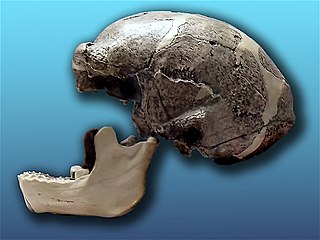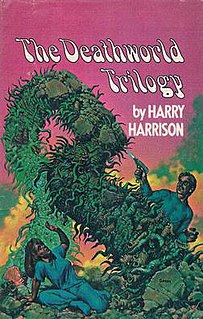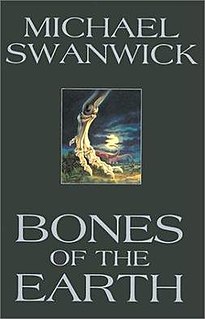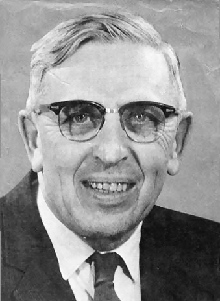Plot summary
Anthropologists Ben Hazard and Ed Stone join a top-secret project which uses a time-travel device, affectionately known as "the Bucket" to return in time to observe human development throughout history. They are shocked to discover that, if they travel far enough into the past to research hominids such as Sinanthropus, they find nothing. There is no trace of humans or any related species in the deep past.

Peking Man, Homo erectus pekinensis, is an example of Homo erectus. Discovered in 1923–27 during excavations at Zhoukoudian near Beijing, China, in 2009 this group of fossil specimens dated from roughly 750,000 years ago, and a new 26Al/10Be dating suggests they are in the range of 680,000–780,000 years old.
Hazard returns from a trip in which he proves that Sinanthropus did not exist in the time indicated by the age of the bones. He, Stone and their mentor, Franz Gottwald, discuss the problem. Gottwald, a by-the-book scientist, insists on facts, not speculation. They therefore decide on an exhaustive effort to discover when, and how, humans did appear on Earth.
Travelling back and forth in the past, Hazard and Stone happen upon an extraordinary event in France, over 25,000 years ago, near a cave where Cro-Magnon remains were found in their time. They see a gigantic spaceship land. Humans emerge, along with robots of various shapes and sizes. Using fantastic technology they shape the land into a primitive home, complete with artifacts such as stone tools. They deposit some apparently brainwashed humans wearing animal skins. They also bury objects in local caves. Hazard is sure that these are bones left for future generations to find.
Returning to modern times, they join Gottwald to try to solve the mystery. Clearly humans did not arise on Earth. The bones planted were probably genuine, but must have been brought from the real home of humanity. They can understand why humans might be seeded on another world, but not why the bones were planted.
Hazard takes a fishing trip to take his mind off the problem, hoping that an idea will occur to him. Remembering one of the chimpanzees used by his project trying to solve a simple puzzle, he decides that the whole thing is a gigantic experiment, a puzzle to be solved with some reward at the end. He also realizes that a necessary part of the experiment is an observer, someone who can monitor it. Such a person would want to get close to the time-travel project, and the best candidate is Gottwald himself, who came from Europe and never talks about his past.
Hazard finds Gottwald's house deserted. Entering, he finds a letter addressed to him, from Gottwald. It tells him that he has solved part of the puzzle, and for the rest he must press a hidden button and stand outside. He does this and is transported to the spaceship, still in orbit about Earth after 25,000 years. There he meets Gottwald and his wife, who are the last survivors of the people who came in the ship. Humans arose on a distant world, discovered faster-than-light space travel, carved an empire for themselves, and were then almost exterminated by the Enemy, a race of vicious monsters. So horrific are these creatures that they are part of human "racial memory", being the demons and dragons and other creatures out of nightmare.
The ship is one of four sent as a last desperate measure. The human race had to start again. It needed a "transfusion" of new ideas and ways of thinking, in order to survive the inevitable future encounter with the Enemy. Gottwald tells Hazard that his people never discovered time-travel. It may be the answer they were seeking. They wait for Ed Stone, who will surely solve the problem and join them. After that, they will begin the process of giving the ship's technology back to humanity, so they can be ready for the battles to come.

An overwhelming majority of fiction is set on or features the Earth. However, authors of speculative fiction novels and writers and directors of science fiction film deal with Earth quite differently from authors of conventional fiction. Unbound from the same ties that bind authors of traditional fiction to the Earth, they can either completely ignore the Earth or use it as but one of many settings in a more complicated universe, exploring a number of common themes through examining outsiders' perceptions of and interactions with Earth.

The Journeyman Project is a time travel adventure computer game developed by Presto Studios.

Gateway is a 1992 interactive fiction video game released by Legend Entertainment, and written by Glen Dahlgren and Mike Verdu. It is based on Frederik Pohl's Heechee universe.

Hyperion is a Hugo Award-winning 1989 science fiction novel by American writer Dan Simmons. It is the first book of his Hyperion Cantos. The plot of the novel features multiple time-lines and characters. It follows a similar structure to The Canterbury Tales by Geoffrey Chaucer. The next book in the series was The Fall of Hyperion, published in 1990.

In science fiction and ufology, a Venusian or Venerian is a native inhabitant of the planet Venus. Many science fiction writers have imagined what extraterrestrial life on Venus might be like.

The First Men in the Moon is a scientific romance by the English author H. G. Wells, originally serialised in The Strand Magazine from December 1900 to August 1901 and published in hardcover in 1901, who called it one of his "fantastic stories". The novel tells the story of a journey to the Moon undertaken by the two protagonists, a businessman narrator, Mr. Bedford, and an eccentric scientist, Mr. Cavor. Bedford and Cavor discover that the Moon is inhabited by a sophisticated extraterrestrial civilisation of insect-like creatures they call "Selenites".
Asteroids and asteroid belts are a staple of science fiction stories. Asteroids play several potential roles in science fiction: as places which human beings might colonize; as resources for extracting minerals; as a hazard encountered by spaceships traveling between two other points; and as a threat to life on Earth due to potential impacts

Deathworld is the name of a series of science fiction novels by American writer Harry Harrison, including the books Deathworld, Deathworld 2 and Deathworld 3, plus the short story "The Mothballed Spaceship". The central hero is a gambler who becomes involved with colonists of an extremely hostile planet.

"Green Patches" is a science fiction short story by American writer Isaac Asimov. It was first published in the November 1950 issue of Galaxy Science Fiction under the title "Misbegotten Missionary", and reprinted under that title in the 1952 anthology Tomorrow, the Stars. It was retitled "Green Patches" in Asimov's 1969 collection Nightfall and Other Stories.

Bones of the Earth is a 2002 science fiction novel by Michael Swanwick. It was nominated for the Nebula Award for Best Novel in 2002, and the Hugo, Campbell, and Locus Awards in 2003.
William Renald Barton III is an American science fiction writer. In addition to his standalone novels, he is also known for collaborations with Michael Capobianco. Many of their novels deal with themes such as the Cold War, space travel, and space opera.

"Does a Bee Care?" is a science fiction short story by American writer Isaac Asimov. It was first published in If: Worlds of Science Fiction in June 1957, and reprinted in the 1975 collection Buy Jupiter and Other Stories. Gold Key Comics also published a comic book version of the story in 1976 in #4 of the four issue science fiction series Starstream: Adventures in Science Fiction. It also appeared in 1976's Questar: Illustrated Science Fiction Classics, published by Golden Press and adapted by A. Moniz with artwork from Jack Abel and in 1975 in Buy Jupiter and Other Stories.

The Excalibur Alternative is a science fiction novel by American writer David Weber, published by Baen Books in 2002. It is one of several novels based on the premise of David Drake's 1986 novel Ranks of Bronze. This novel is based on the short story "Sir George and the Dragon", which appeared in the 2001 anthology Foreign Legions.
William Greenleaf is an American author. He was born in Illinois, spent most of his life in Southern Arizona, and now lives in New Mexico near Santa Fe. He is a graduate of Arizona State University and worked as a corporate strategic and financial planner before changing careers to become a novelist, freelance book editor, and creative writing instructor.
Ancient astronauts have been addressed frequently in science fiction and horror fiction. Occurrences in the genres include:

"Mr. Spaceship" is a science fiction short story by American writer Philip K. Dick, first published in 1953 in Imagination in January 1953, and later in The Collected Stories of Philip K. Dick. It has since been republished several times, including in Beyond Lies the Wub in 1988.

Knight Moves is science fiction space opera novel by American author Walter Jon Williams, published in 1985.

Clifford Donald Simak was an American science fiction writer. He won three Hugo Awards and one Nebula Award. The Science Fiction Writers of America made him its third SFWA Grand Master, and the Horror Writers Association made him one of three inaugural winners of the Bram Stoker Award for Lifetime Achievement.

Beyond the Blue Event Horizon is a science fiction novel by the American writer Frederik Pohl, a sequel to his 1977 novel Gateway and the second book in the Heechee series. It was a finalist for two major annual awards, the 1981 Hugo Award for Best Novel and the 1980 Nebula Award. In the 1981 poll of Locus readers it finished second to The Snow Queen by Joan Vinge.

















